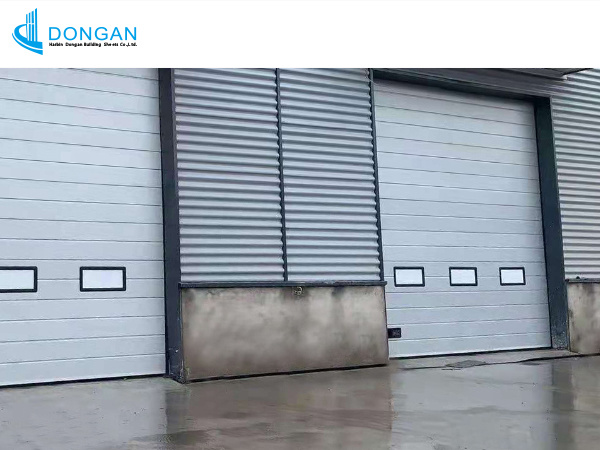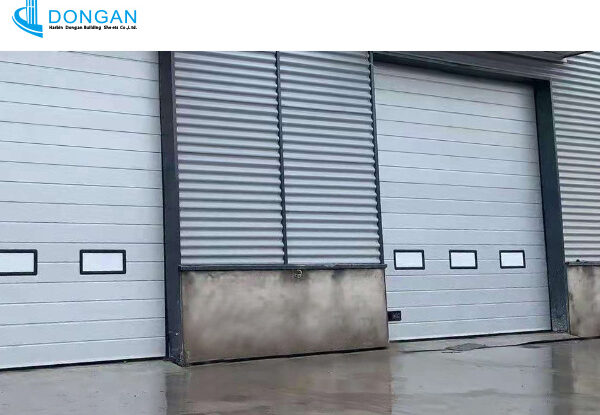In industry, door choice plays a significant role in facilitating operations, safety, and energy efficiency. Industrial sliding doors and industrial sliding-up doors are the two most prevalent varieties. Although they share similar purposes, there are differences in aspects of design, operation, and application. In this article, their most notable characteristics, compared benefits, and future development in industrial door technologies are addressed.
Industrial Sliding Doors: Introduction and Important Features
An industrial sliding door is used to open and close horizontally on a track. Industrial sliding doors are frequently used in warehouses, factories, and loading bays due to their space-saving features.
Main Features of Industrial Sliding Doors
- Space Saving – Sliding doors require no additional clearance, as opposed to swing doors, and thus are ideal for confined spaces.
- Durability – Constructed using tough materials like steel or aluminum, they can withstand heavy usage and brutal environments.
- Customization – Produced in varying sizes and insulation forms to meet various industrial needs.
- Automation Compatibility – They are typically accompanied by sensor and auto system compatibility for hassle-free operation.
A German logistics firm case study discovered that replacing industrial sliding doors with traditional swing doors reduced energy loss by 15% due to enhanced sealing and faster operation.

Industrial Sliding-Up Doors: Description and Most Significant Features
Industrial Sliding-Up door has horizontal movement and vertical movement, rolls up and then slides down along the ceiling. The configuration becomes helpful where there is not much headroom space available in the building or when the maximum clearance required must be created.
Key Features of Industrial Sliding-Up Doors
- Maximum Clearance – Movement up on slides provides the clear opening of the door without touching passageways.
- Enhanced Security – Protected and safe panels provide superior security.
- Energy Efficiency – Better insulation reduces heat transfer, cutting HVAC costs.
- Quick Operation – Certain models open and close in seconds, enhancing workflow productivity.
In a study conducted at one U.S. auto plant, it was found that installing industrial sliding-up doors lowered door-linked downtime by 20% due to their faster cycle time.

Comparison: Industrial Sliding Doors vs. Industrial Sliding-Up Doors
| Feature | Industrial Sliding Door | Industrial Sliding-Up Door |
| Movement Mechanism | Horizontal sliding | Vertical lift + horizontal slide |
| Space Requirement | Minimal side space | Minimal overhead space |
| Clearance | Partial when open | Full when open |
| Speed | Moderate | Fast |
| Best For | Warehouses, loading docks | High-clearance facilities, cold storage |
| Cost | Lower initial cost | Higher initial cost |
Future Industrial Door Technologies Trends
The industrial doors market is changing due to increased automation, intelligent control, and the application of environmental materials. The latest prevailing trends are:
- Smart Integration – Web-operated Internet-of-Things doors with forward-looking maintenance.
- Energy-Saving Designs – Increased heat insulation to meet stricter environmental regulations.
- Key-Speed Automation – Raised door cycle speeds for greater production and logistics efficiency.
A market report for 2023, the global industrial sliding-up doors and automatic industrial sliding doors market is expected to grow at an annual rate of 7.2% as industrial automation gains momentum in warehouses.
Conclusion
Choosing an industrial sliding door or an industrial sliding-up door depends on some working conditions. Sliding doors offer economical, space-conserving options, while sliding-up doors offer full clearance and velocity. Both will be more efficient and effective with advancing technology, ultimately maximizing the working of industries. Companies need to think about their spatial constraints, workflow requirements, and budget before making a choice.
With an understanding of the strengths of each system, industries can choose the optimal door solution for increasing productivity, security, and energy efficiency.






